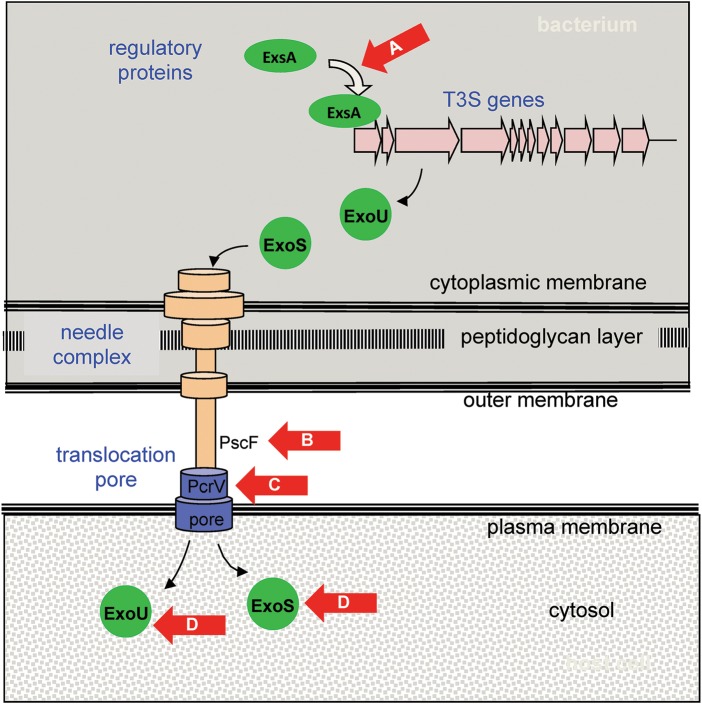Figure 2.
Overview of antivirulence agents active against the type 3 secretion (T3S) system of Pseudomonas aeruginosa. Red arrows indicate the molecular targets of agents in development to prevent intoxication by the T3S system. ExsA is a transcriptional activator that induces expression of all genes in the T3S regulon. This induction is blocked by N-hydroxybenzimidazoles [22] (A). T3S genes encode proteins such as the PscF monomer, which polymerizes to form the needle complex. PscF is thought to be targeted by phenoxyacetamide compounds [23, 24] (B). PcrV is located at the tip of the needle complex and is essential for insertion of the translocation pore into the plasma membrane of the host cell. This protein is targeted by antibodies KB001 (KaloBios) [21] and MEDI3902 (AstraZeneca) [25] (C). Effector proteins ExoU and ExoS are injected into the host cell, where they manifest enzymatic activities that damage or subvert these cells. The activity of ExoU is inhibited by pseudolipasin A [26] and that of ExoS is inhibited by exosin and STO1101 [27, 28] (D).

